-
Pest SolutionsPESTS + WEEDSUSING PESTICIDES OR HERBICIDES?
I should be a large image.
Nutsedge
Cyperus esculentus and Cyperus rotundus
Updated Apr 04, 2024
Make a Positive Identification
- Nutsedges are weeds in yards, gardens and agriculture.
- Nutsedge leaves are stiffer than lawn grass, and arranged in sets of three. They grow from a triangular base.
- Nutsedge spreads aggressively by underground tubers, and sometimes by seed.
- Seedlings and sprouts from tubers look similar to the mature plant.
Yellow Nutsedge
Species: Yellow nutsedge
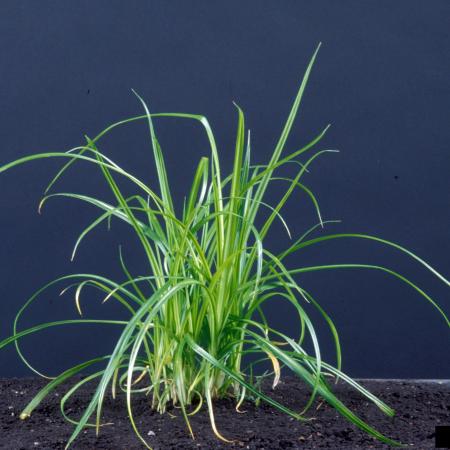
Ohio State Weed Lab, The Ohio State University, Bugwood.org
Yellow nutsedge (Cyperus esculentus) leaves are light green. Narrow leaves grow up to 12 inches long and have pointed tips as shown in the photo. Stems grow up to 3 feet tall from a triangular base.
Species: Yellow nutsedge
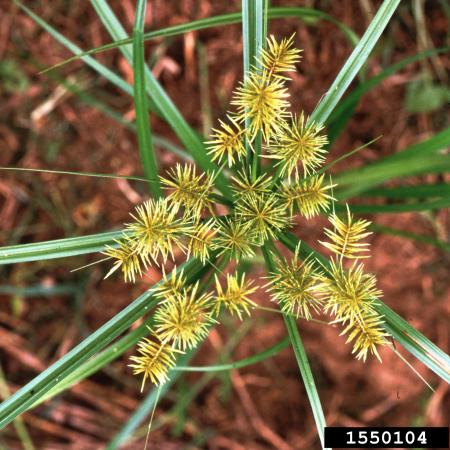
John Cardina, The Ohio State University, Bugwood.org
Yellow nutsedge flowers (spikelets) and seeds are light brown to golden.
Species: Yellow Nutsedge
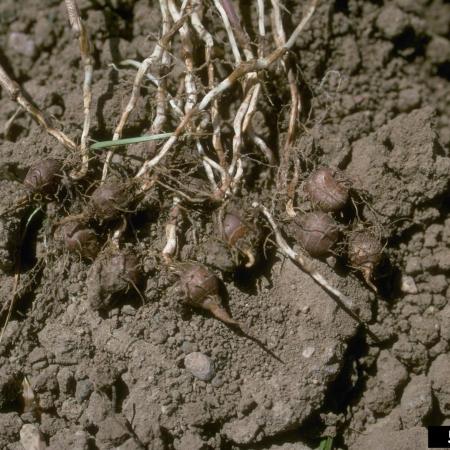
Howard F. Schwartz, Colorado State University, Bugwood.org
Mature yellow nutsedge tubers are up to ½ inch wide, round, smooth and brown-black. A single tuber forms at the end of a rhizome. The tubers taste like almonds.
Purple Nutsedge
Species: Purple Nutsedge
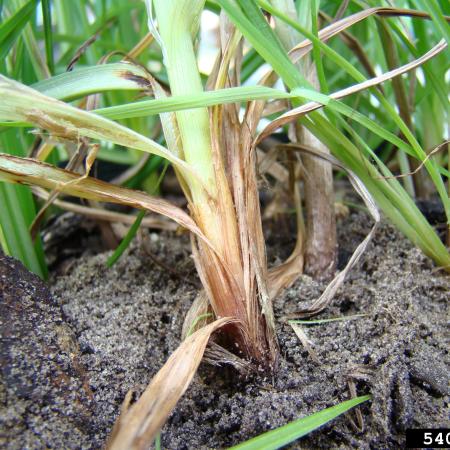
Rebekah D. Wallace, University of Georgia, Bugwood.org
Purple nutsedge (Cyperus rotundus) leaves are dark green with rounded tips. They grow 2 - 6 inches long. Stems grow up to 1 - 2 feet tall from a triangular base.
Species: Purple Nutsedge
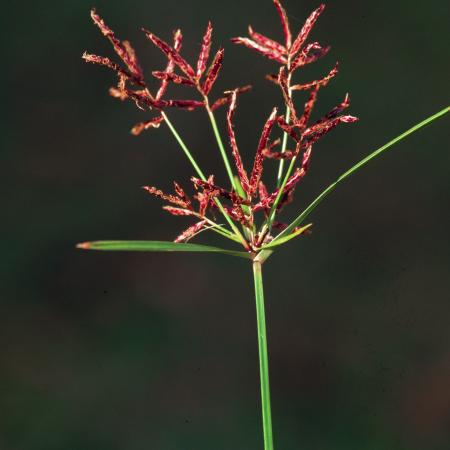
James H. Miller, USDA Forest Service, Bugwood.org
Purple nutsedge flowers (spikelets) are red to purple. The seeds are dark brown or black.
Species: Purple nutsedge
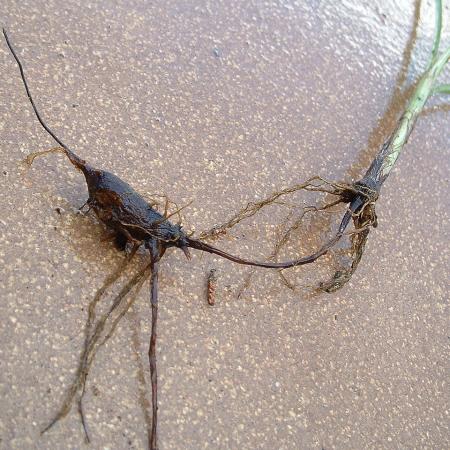
Mature purple nutsedge tubers are up to 1 inch wide with red-brown scales. The tubers grow in groups on a single rhizome. The tubers taste bitter.
LOOK-ALIKES: OTHER NUTSEDGE SPECIES
Species: Other Nutsedge Species
There are several other weedy and many native species of nutsedge in North America.
It takes a special identification key and training to tell the species apart.
Control methods for all nutsedge species are the same.
Your local Extension Specialist in Oregon and other states can help you identify plants on your property.
Nutsedge Benefits
- Yellow and purple nutsedge tubers are edible.
- Cultures around the world use them as a food source.
- Hogs dig and eat the tubers.
Only eat wild edible plants you correctly identify. Only eat nutsedge tubers from your own property. Don’t eat nutsedge tubers that have been sprayed with chemicals or growing on roadsides.
Nutsedge Risks
- Nutsedges form a dense mat of stems and leaves if left un-managed.
- They exclude other garden and landscape plants.
- They become a nuisance in lawns by replacing grass.
Risk Card
Does it cause harm?
Adults & Children
Low
Property
Some
Pets
None
Annoyance
High
Difficult to control
Environment
Some
Action Recommended
NEED HELP?
Consider a licensed pest control company. Learn How to Hire a Pest Control Company.
Your local Extension Specialist in Oregon and other states can suggest other methods.
Content provided by editor Weston Miller and writer J. Jeremiah Mann. Pesticide safety information edited by Kaci Buhl.
Peer reviewed by OSU Department of Horticulture.
Nutsedge (Cyperus spp.)
University of California IPM
Nutsedge Control
University of California IPM
Yellow Nutsedge
Washington State Noxious Weed Control Board
Purple Nutsedge
Washington State Noxious Weed Control Board
Yellow Nutsedge
Oregon State University Dept. of Agriculture



